The Corsair H80i GT and H100i GTX AIO Coolers Review
by E. Fylladitakis on November 16, 2015 8:00 AM EST- Posted in
- Cases/Cooling/PSUs
- Corsair
- Liquid Cooling
- Corsair Link
The Corsair H80i GT and H100i GTX
Both the H80i GT and the H100i GTX are based on the common configuration of a radiator, two hoses and one block that combines the CPU contact plate and the pump. The H80i GT is designed to take a single 120 mm slot while the H100i GTX requires two adjacent 120 mm slots. For both of these liquid coolers, Corsair ditched the standard thin corrugated/rubber tubing and is using thick braided tubes instead. The internal diameter of these tubes is not really larger, but they are more resistant to kinks and have significantly greater mechanical strength.
The main (and virtually only) physical difference between the H80i GT and the H100i GTX is the radiator. Both radiators are based on the same core design, a dual pass cross-flow configuration with wavy fins attached to the thin oblong tubes. The H100i GTX has a 276 mm long radiator that is 30 mm thick and can hold two 120 mm fans on either of its sides. The radiator of the H80i GT is 154 mm long and capable of holding one 120 mm on either of its sides, but it also is 49 mm thick, making up some of the lost mass. The thickness however increases the airflow impedance of the radiator significantly, which is why Corsair is supplying two 120 mm fans with the H80i GT to be used in a push-pull configuration, in order to maintain practical pressure and airflow levels. The 30 mm radiator of the H100i GTX has significantly lower airflow impedance and thus a push-pull configuration would not have a significant effect, particularly considering the already high pressure of the supplied SP120L fans.
Both of the coolers we review today share the same pump/block assembly. It is mostly made out of plastic, with an octagonal piano black top and a circular base. A grey cover with a semi-transparent company logo can be seen at the top. RGB LED lighting is installed beneath this cover, illuminating the company logo along with the top and the bottom side of the grey cover.
The copper contact plate is attached to the circular base of the block with eight screws. Thermal material is pre-applied to it and it comes with the Intel CPU mounting retention bracket from the factory. A retention bracket for AMD CPUs is included in the box.
One of the most important features of these two coolers is the Corsair Link support. By attaching the provided USB cable to an internal header on the motherboard (or to the Corsair Link Commander, if one is available), the user has direct control over almost everything regarding the coolers. The LED color can be changed manually or can be linked to a temperature, the speed of the pump and the cooling fans can be configured and custom cooling schemes can be programmed as well. The speed of the pump or fans can be set to one of the pre-programmed modes (e.g. Quiet, Performance, etc.), to a fixed speed or a custom cooling curve can be manually created.


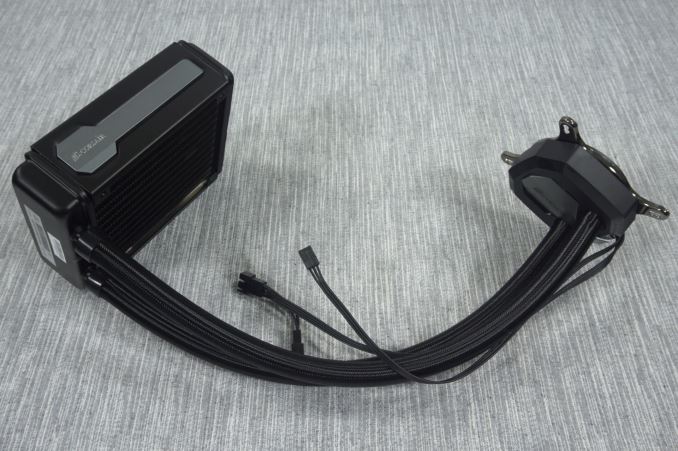
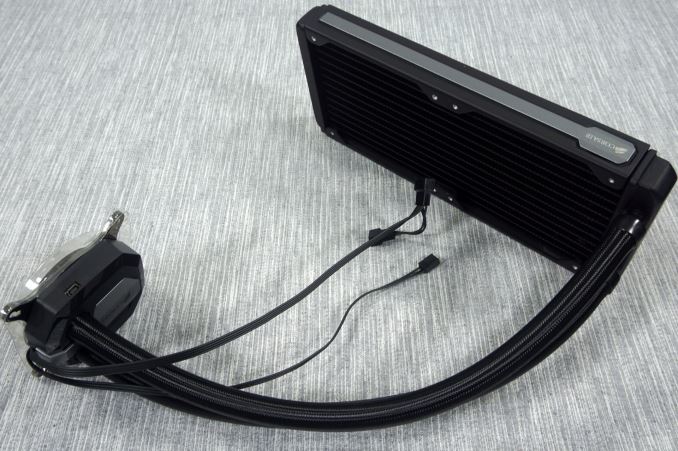
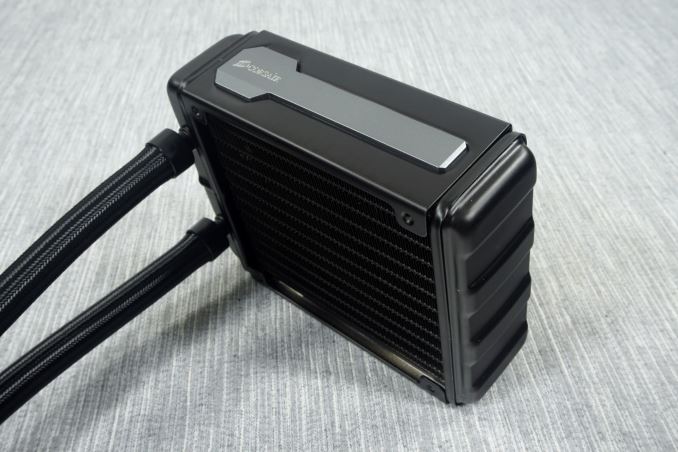
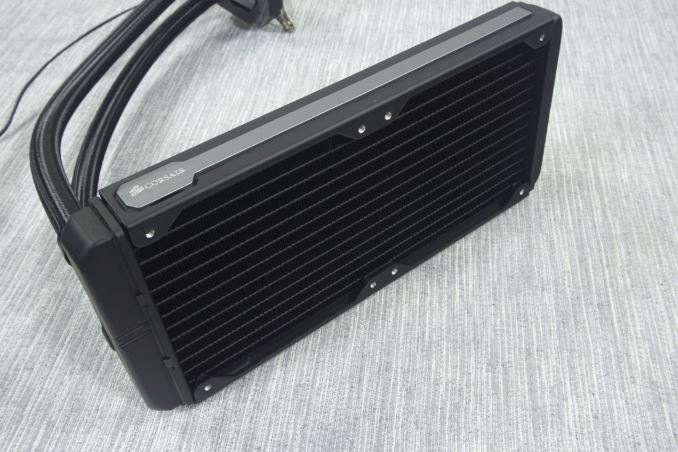
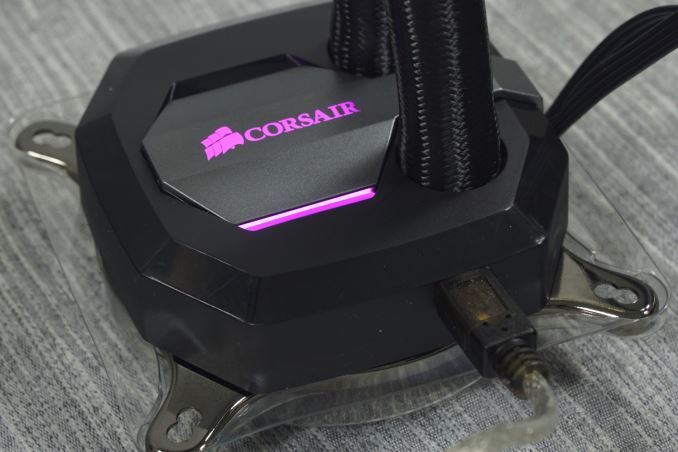
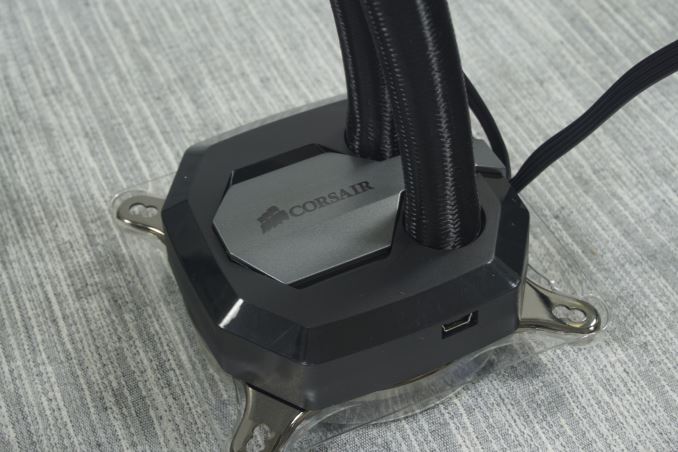

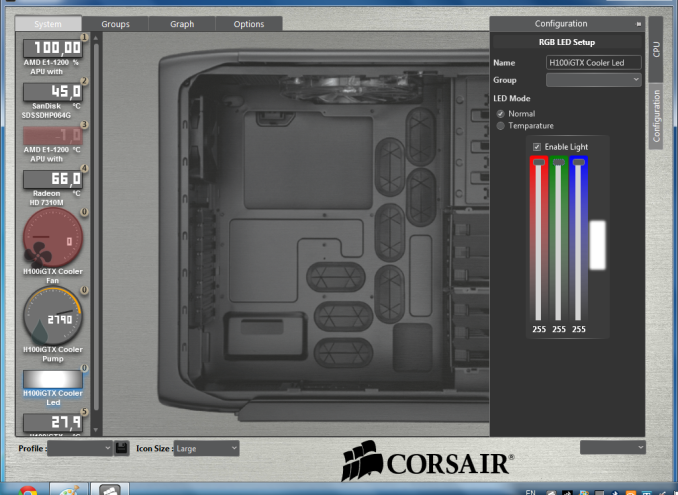
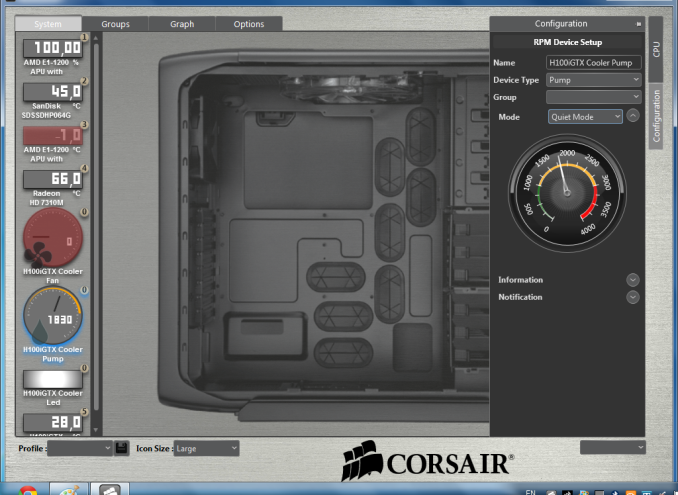
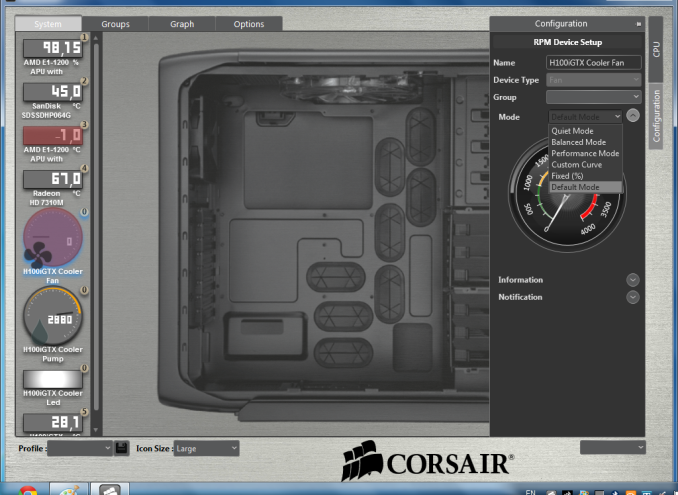








47 Comments
View All Comments
HollyDOL - Monday, November 16, 2015 - link
Great cooling, but it needs to get at least 10dB quieter to be comfortably usable, 48dB is way too much to be comfortable for me. Can't claim I have any idea how to reduce it that much though (except having luck with better pump than the one with whinning noise as mentioned in review).../wishful thinking:
Tbh, house air condition systems imho could already provide bayonet plugs for PC water cooling, let the noise and heat go where it doesn't hurt :-)
GreenMeters - Monday, November 16, 2015 - link
An AIO cooler that's too loud, too expensive, too bulky, and under-performs to much cheaper, much quieter, much smaller traditional HSF? Color me shocked. Stupid bling for stupid people.Black Obsidian - Monday, November 16, 2015 - link
These AIO coolers only under-perform traditional HSFs that are themselves quite expensive and bulky, so the situation is not quite as black-and-white as you suggest.jabber - Monday, November 16, 2015 - link
Still got a H50 in the cupboard. Having switched to non-homebrew PCs recently its been waiting for a new project.ikjadoon - Monday, November 16, 2015 - link
I agree with the other commenters: can we see what the overall noise/performance is like compared to very high-end air coolers, like the NH-D15, the NH-U14S, the PH-TC14PE, etc.?MrTeal - Monday, November 16, 2015 - link
If you can, it would be very interesting to see how the EK Predator or Swiftech H240x does on your testbench relative to the AOI coolers.thestryker - Monday, November 16, 2015 - link
I would love it if AnandTech would get their hands on both of the EK Predator models. I've heard their pump noise is a lot better, not to mention expandable (the 360) and refillable.Pissedoffyouth - Monday, November 16, 2015 - link
I'm thinking I might use one of these with one of those Broadwell APU's in a really tiny case. Should be able to overclock the iGPU massivelymaximumGPU - Monday, November 16, 2015 - link
And that is why i switched back to air cooling, couldn't stand that pump noise!Eagle1848 - Monday, November 16, 2015 - link
I bought the H100i GTX for my last build a couple months ago in a Define R5 Chassis (Has sound dampening). I cannot hear any part of the system outside the case and I can barely hear it if I stick my head inside the case on balanced mode. Performance mode you can of course hear it even outside the case. But then again that also puts it at 100%. And I can pretty much guarantee that with a mid to high end graphics card, you won't be able to hear this over whatever noise the graphics subsystem is putting out. The only part I ever hear is my GTX 970 spinning up.